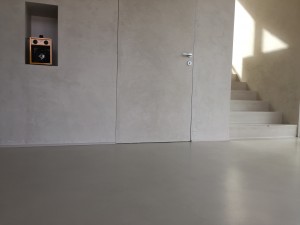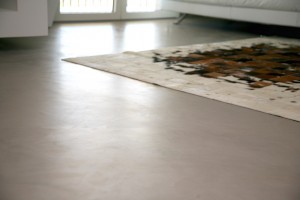What resins are, how they look like and what the main varieties are
A brief introduction to resins for flooring by Venber Verona
 Let’s take our trip into the world of resins
Let’s take our trip into the world of resins and go to see what they really are, giving some definitions. The resin is a fluid substance, having various degrees of viscosity, from liquid to pasty. Thanks to special catalysts it can assume a definitive solid state, with a final appearance that can switch from transparent to totally covering.
and go to see what they really are, giving some definitions. The resin is a fluid substance, having various degrees of viscosity, from liquid to pasty. Thanks to special catalysts it can assume a definitive solid state, with a final appearance that can switch from transparent to totally covering.
We have to clarify the distinction between natural and artificial resins. When talking about natural resins we are referring to liquids generated in nature such as from plants, therefore produced from a natural process. An example is the resin of conifers with the function to protect and partly reconstruct the bark and the external protective layers of the tree.
For many plants, such as conifers, it is essentially a natural protection to the wounds that the tree suffers. In the case of other plants, such as calendula, the resin is not easily identifiable as it is an essential part of plant tissues. These types of natural resins are widely used in the field of cosmetics, detergents, perfumes, but cannot be used in building.
When talking about resins for flooring we refer to artificial resins, created by man through industrial processes. The best performing in this field are the epoxy and polyurethane resins.
The above-mentioned resins are created through 2 different substances called precursors, the first is the body of the substance, the second is the hardener, with the function to activate the hardening and therefore the transition from liquid to solid state. Sometimes the hardener could be the oxygen in the air.
Varieties of resins
A first type of artificial resins are the phenolic ones. They are polymers constituted by a basic monomer belonging to the family of formaldehydes. An example of phenolic resins is the bakelite, it is a thermosetting product, a so-called “burning plastic”, therefore can not be used when it is necessary to recast and reuse the material.
Another type of synthetic resins is the acrilic ones, based on a basic component named acrylic acid. Starting from this substance a lot of different materials are produced, both resinous and fibrous, the so-called acrylic fibers. They present several characteristics and can be used almost anywhere, from textile to metals coating, to the building industry.
Then there are the epoxy resins, which have additional, advanced and more useful characteristics and are, by definition, the fundamental basis of resins for flooring. They consist of a fundamental component that is the three-atoms epoxy ring, namely 2 atoms of ethylene and one of oxygen, called generally ethyl oxide.
characteristics and are, by definition, the fundamental basis of resins for flooring. They consist of a fundamental component that is the three-atoms epoxy ring, namely 2 atoms of ethylene and one of oxygen, called generally ethyl oxide.
They have specific characteristics much higher than other types of resins, in terms of hardness, stability, elasticity and resistance to external factors. In most cases they need hardeners to reach the solid state, even if not in all the most common commercial varieties. They are also widely used in the production of composite materials, such as carbon fibers and kevlar. They act as a matrix to keep posing the fibers and give the finished product the solid, compact and neat appearance required.
A last type is the polyester resin, based on ester chains with double carbon bonds, it can be synthesized by condensation and has a remarkable resistance to chemical agents. This type of resin is widely used – in the spun, thin version – in the textile, where it has assumed a role almost equal to natural fibers.
Since the huge amount of resin varieties, for the manufacturer it is fundamental to have a deep competence and know exactly the material chemistry, it is very important in order to produce high quality products. Geo hydrica, holder of the brand Venber in Verona, present also in Milan, Turin and in the whole Northern Italy, grants the experience and reliability that are necessary for this purpose. Our company uses only products formulated by itself, that constitute our line COLORPAVING, leading system in the field of resins for flooring.

